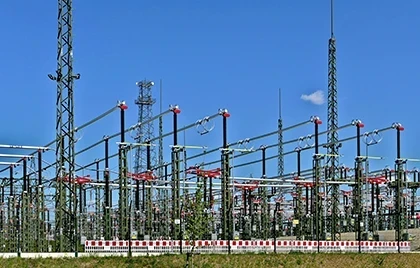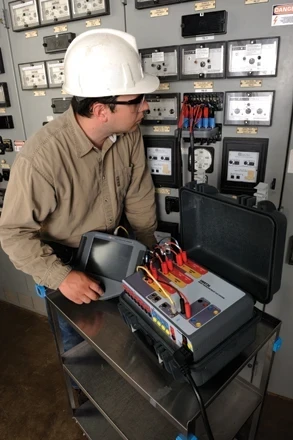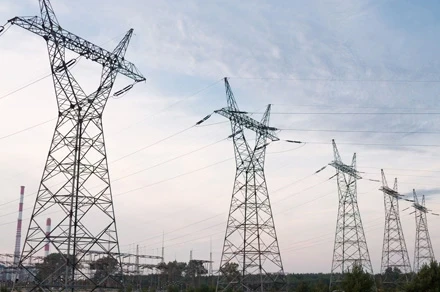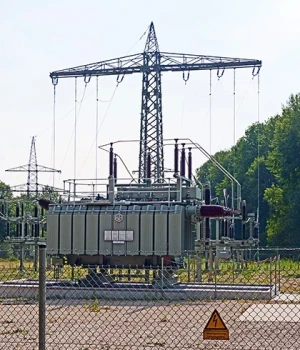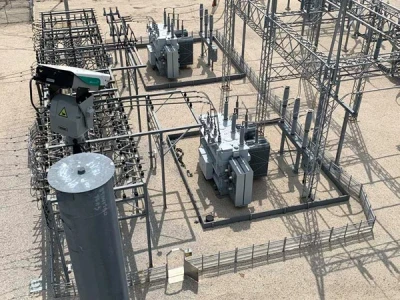The Role of Digital Twins in Substation Management and Grid Optimization

In recent years, digital twin technology has emerged as a game-changer in various industries, and the power sector is no exception. Digital twins are transforming how substations are managed by creating virtual replicas that provide insights into performance and potential issues. A digital substation is the physical interface that makes digital twin modelling of electrical assets possible.
This article explores the application of digital twin technology in substations, its benefits for predictive analytics and decision-making, integration with existing SCADA systems and other grid management tools, and the efforts of utilities in North America to leverage this technology for grid optimization.
Explanation of Digital Twin Technology and Its Application in Substations
A digital twin is a dynamic, virtual model of a physical asset, system, or process that mirrors its real-time status, operation, and performance. In the context of substations, digital twins replicate the physical infrastructure and its components, including transformers, circuit breakers, and control systems. These virtual models are continuously updated with data from sensors and IoT devices, reflecting the current state of the substation. Real-time substation automation data feeds the digital twin, enabling predictive maintenance and asset planning.
Digital twins enable utilities to simulate, analyze, and optimize substation operations. They provide a comprehensive view of the substation’s performance, allowing operators to monitor equipment health, predict failures, and make informed decisions. Visualizing and interacting with a virtual model of the substation enhances situational awareness and improves overall operational efficiency. Comprehensive electrical substation components data helps ensure that the twin accurately reflects real-world performance.
Benefits of Using Digital Twins for Predictive Analytics and Decision-Making
One of the most significant advantages of digital twins is their capability for predictive analytics. By leveraging historical and real-time data, digital twins can identify patterns and trends that indicate potential issues. Predictive analytics enable utilities to proactively anticipate equipment failures, schedule maintenance, and minimize unplanned outages. Effective electrical substation design is pivotal in optimizing the interaction between digital and physical assets.
For example, a digital twin of a transformer can analyze temperature fluctuations, load variations, and other factors to predict when the transformer might fail. This foresight allows utilities to perform maintenance before a failure occurs, reducing downtime and extending the equipment’s lifespan. Additionally, predictive analytics help optimize maintenance schedules, ensuring that resources are allocated efficiently and cost-effectively.
Digital twins also support decision-making by providing actionable insights. Operators can use the virtual model to test various scenarios, such as load changes or equipment upgrades, and evaluate their impact on substation performance. This capability allows for better planning and risk management, as operators can identify potential issues and implement solutions before changing the physical infrastructure.
Integration with Existing SCADA Systems and Other Grid Management Tools
Integrating digital twins with existing Supervisory Control and Data Acquisition (SCADA) systems and other grid management tools is crucial for maximizing their benefits. SCADA systems collect and analyze data from substation equipment, providing real-time monitoring and control. By integrating digital twins with SCADA, utilities can enhance their monitoring capabilities and gain deeper insights into substation operations.
Digital twins complement SCADA systems by providing a more detailed and dynamic view of the substation. While SCADA systems offer real-time data, digital twins can simulate future scenarios and predict potential issues. This combination of real-time monitoring and predictive analytics enables utilities to optimize substation performance and improve grid reliability.
Moreover, digital twins can be integrated with other grid management tools, such as Energy Management Systems (EMS) and Distribution Management Systems (DMS). This integration facilitates a holistic approach to grid optimization, allowing utilities to manage substations in the context of the broader grid. For instance, digital twins can help balance load distribution, integrate renewable energy sources, and enhance grid resilience. When paired with a solid electrical substation maintenance strategy, digital twins offer powerful insights that improve grid reliability.
Visit our Substation Maintenance training course.
Visit our Electricity Forum Electrical Substation Channel Page.
Read full article in the Substation And The Grid Special Edition


